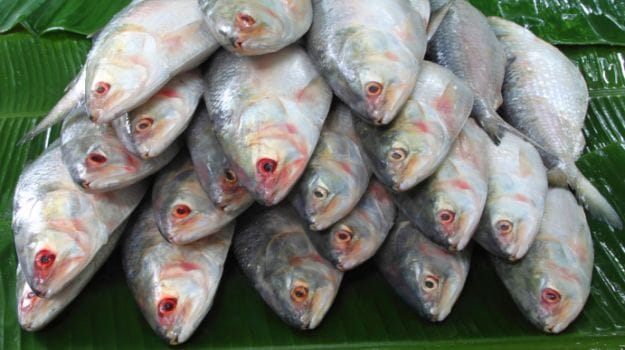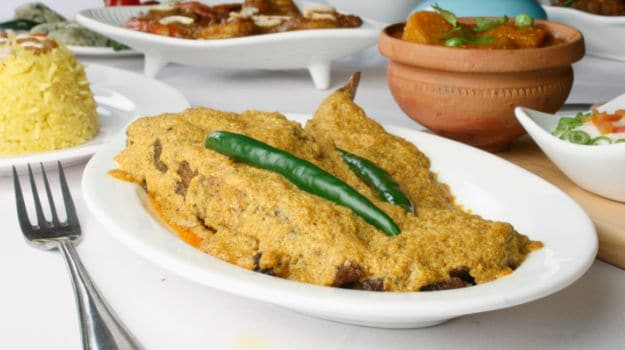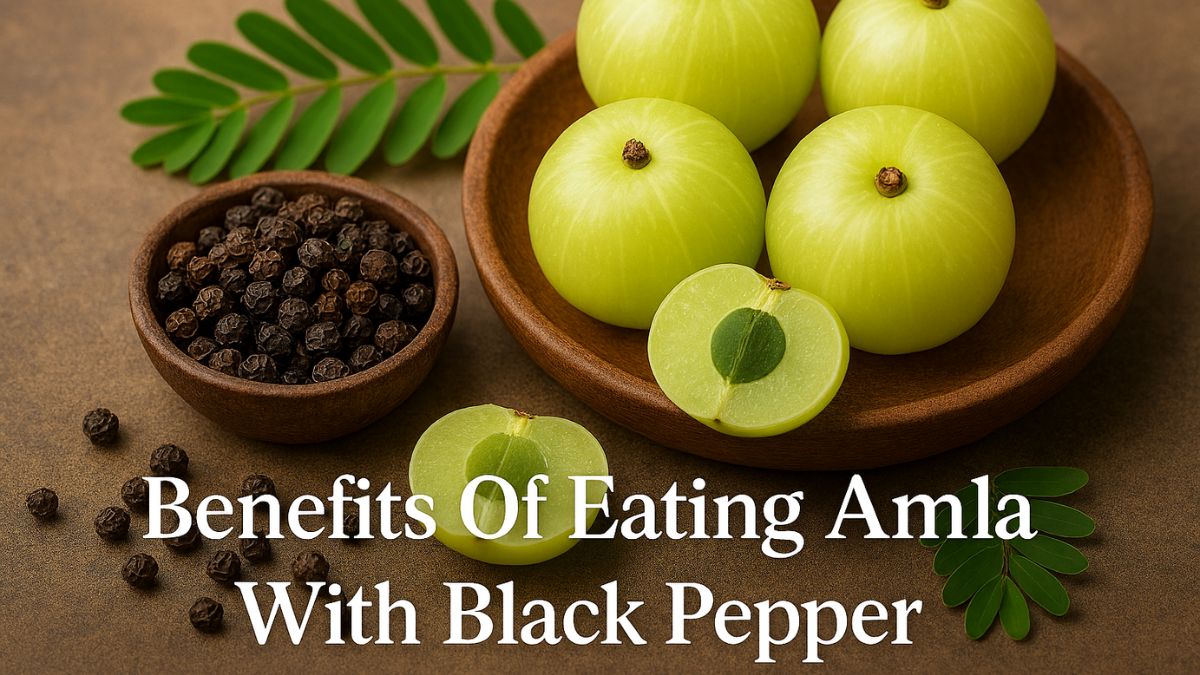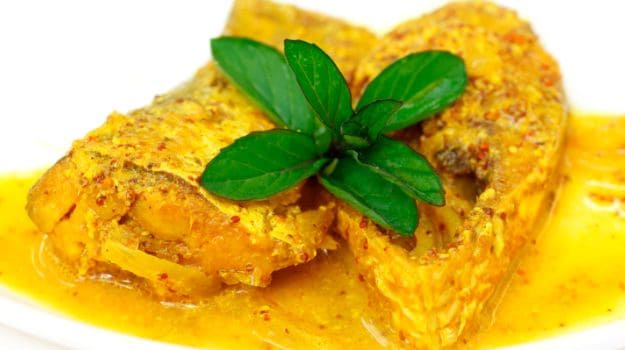"Raindrops on roses and whiskers on kittens
Bright copper kettles and warm woolen mittens
Brown paper packages tied up with strings
These are some of my favorite things" - Sound of Music
I am absolutely passionate about cooking, though I can't really remember how long it's been. And I have cooked in myriad locations and conditions; whether it was making spicy chicken pish pash on a stormy evening in Netarhat, barbecuing a whole pheasant in Ajodhya hills, cooking Maggi combined with tuna inside the bathroom of a hotel room in Ooty, or cooking masoor daal with radhuni and aloochokha (Bengali-style) in the peak of summer at Ghatshila, gosh, it has been so much fun! But possibly the greatest of these adventures was aboard a launch in the Sundarbans.
I was in class 12 and on a short trip to the Royal Bengal's domain during the height of the monsoons. We were travelling on our boat and the skies were sometimes dark and overcast, at times it rained incessantly and sometimes it drizzled ever so sweetly. There were times when the river looked menacing with the waves billowing in dark shades of grey and sometimes when the rain would stop and the sun could tear through the clouds with all its brilliance, the waves would glitter like sheets of gold. And then in the midst of the golden brilliance my eyes would get dazzled with silvery iridescence - shoals of Hilsa going upstream to lay eggs. It was an amazing sight and it seemed like they were having so much fun, swimming with such urgency as if they were on a mission.
It was the Hilsa season and I was absolutely thrilled. As the evening descended, en route to our final destination, we stopped at a village for some refreshments and there it was - freshly caught Hilsa being sold by fishermen straight from their boats. We bought a couple of fish from them; the elderly fisherman had mentioned that the best Ilish is between 1.2 to 1.75 kilos. The two fish that we got were about three kilos. Totally elated we continued on our cruise and my mind wandered into thoughts of the ensuing dinner.
As one of our boatmen got down to cleaning the Ilish, I rummaged through the spices and ingredients trying to decide what I could cook up. As the darkness descended, it also started to rain and our boat slowly glided through the water, the vegetation stooping low as if to bow and welcome us into the Sundarbans.
I decided to cook up quite a storm considering it was aboard a launch deep inside the Sundarbans. I made some IlishBhajaa (deep-fried Hilsa) reserving the oil to serve along with the fish, Bhapa Ilish (steamed Hilsa with mustard and green chillies) and Ilish Tel Jhol (Hilsa cooked in a thin broth with turmeric, nigella seeds and mustard oil) with the assistance of the boatmen. And the cooking experience was made even more memorable with thrilling stories of the Royal Bengal tiger and ghosts too.(Best Bengali Recipes)
By the time we finished cooking, the rain which was a little more than a drizzle all this while had turned into a torrential downpour. We all sat down for dinner relishing the star ingredient Ilish. After dinner, we then shifted to the top deck, chatting late into the night, singing odes to the fish that had made our experience one to remember for a lifetime.
(Recipe: Ilish Machher Jhol)The Hilsa Story
It has been more than 25 years since then, and my life has been through its own twists and turns, possibly like everyone else's, but I have made sure to follow my dreams - to become a chef. No matter what life threw at me, I have held on to that dream, got professionally trained, gained experience and have been a chef for more than 20 years now. Some people think that I'm good at what I do and honestly speaking I believe that too. But the insatiable appetite to do new things has always been on the front. And today when I look back to figure out what is that one thing that fascinated me the most on this culinary journey, it's a fish called Ilish. I have always been intrigued by it. Ilish or Hilsa is a fish living its life out in the ocean, swimming back upstream into rivers to spawn and reproduce but unlike the Salmon it does not die after spawning, instead it goes back to its oceanic habitat. The peculiarity being that it can live both in saline ocean habitats as well as fresh water river habitats, but due to the change in its environment the fish goes through a physiological change and develops into the fish that we all know as Ilish.
I have always been intrigued by it. Ilish or Hilsa is a fish living its life out in the ocean, swimming back upstream into rivers to spawn and reproduce but unlike the Salmon it does not die after spawning, instead it goes back to its oceanic habitat. The peculiarity being that it can live both in saline ocean habitats as well as fresh water river habitats, but due to the change in its environment the fish goes through a physiological change and develops into the fish that we all know as Ilish.
The Hilsa spawning season coincides with the advent of the monsoons to the point that its arrival is totally entwined with the Bengali psyche and culture. And for ages, the fish has been satisfying the monsoon hunger pangs of the Bengalis transcending gender, class and age, with me no exception.(10 Best Indian Fish Curries)
As much as I love to eat Ilish cooked in the traditional preparations, I'm absolutely obsessed with making new dishes with it as well; whether it is Kolmi Saag Diye Ilish (Hilsa stewed with kolmi greens), Ilisher Dom Chorchori (Hilsa and seasonal vegetables stewed in sealed earthen pot), Hilsa baked with Bori Crust, Hilsa Grilled with Cheese and KanchaLanka Pickle, Hilsa Stuffed Pumpkin Blossoms with Cinnamon Smoked Pineapple Salsa or the simple Shosha Ilish (Hilsa simmered with cucumber and coconut).
Doi ilish
The Dreadful Decline
One thing that I understood over the years is - Hilsa is so great by itself that it lends its flavour to any dish you make; it lets you combine various spices and vegetables, yet keeps its greatness intact. But today even though I want to do so much more but my love, my Ilish is ever so elusive. With more and more chefs creating newer ways to serve Hilsa or reintroducing old favourites, we are not realizing a dreadful underlying mistake.
It is no longer just a phrase that the "ganga-r Ilish" (Hilsa from the Ganges) is disappearing from our vocabulary but it means a whole lot more. The shoals of Hilsa are simply dwindling year by year. Like all other animals, Hilsa too has certain favourable conditions for it to reproduce. A few of them include depth of the river channel of a minimum of 50-60 feet and reasonably less polluted water with the influx of fresh clean water such as rainwater. Moreover, heavy siltation in the river channels with the absence of proper consorted dredging plans, indiscriminate catching of juveniles in the catchment areas, disruption of migration routes, loss of spawning, feeding and nursing grounds, and increased river pollution are considered to be some of the causes for this decline in Hilsa concentration in Bengal.
Making matters worse, the uncontrolled use of mechanised Hilsa fishing boats in the coastal areas is preventing upward spawning migrations of this fish, instead the Hilsa migration routes have shifted more towards Myanmar and China. Throughout the year we are oblivious of our contribution to the dwindling shoals of the Hilsa, and come monsoons the discussion in all parlance is why the government does not take enough initiatives to import Hilsa from Bangladesh, but do we even think of taking any initiative ourselves so that we can try and revive the Hilsa habitats on our side of the river? We might love our Ilish very dearly but the fish really has no such bearings whatsoever.
Uncooked preserved IlishTo Be or Not To Be Responsible
Till a few monsoons back, I had been holding an elaborate lunch for my friends in ode to Ilish. I would pre-order the fish with my favourite and trusted fish seller (he sure knows what I want) so that I could get the best of the best no matter what the price, and when I would go back to collect the fish, the pride and glee on my fish seller's face would say it all. And I, by then would have my entire menu well chalked out in my head.
The glance of the full rounded body of the fish, the silvery glistening scales with a light blushing of pink and the bright eyes would all indicate towards a meal fit for the kings. I would take so much pride at the fish and would try and surpass all boundaries to cook up a decadent meal. But in the last couple of years, during the height of monsoons, even though I have been making innumerable trips to the market looking for that particular Ilish, it has all been in vain.
As much as I hate to disappoint my friends, my heart and soul sinks to the thought that the Hilsa might just disappear totally from this region in the near future. Can we even think of such a day? A monsoon with no Ilish on the Bengali plate! I do not want to sound harsh but if we do not make an effort to preserve such a delicacy we might just lose it forever.
I quiver with the thought of such a dark day, and as I stand on the banks of the river in Sundarbans, I look towards the horizon hoping that sooner, we the people of Bengal especially the proclaimed foodies of this place, would make a sincere effort so that the Hilsa does not swim away from our waters forever. I pray to the Almighty that I would be given an opportunity to experience that monsoon night feast aboard a launch 25 years ago, just to relish a fish that changed my life forever and I pray that Ilish makes a resounding comeback in our waters and again my eyes would get dazzled with silvery iridescence among sheets of gold.(Watch, Learn and Cook: Best of Bengal)








